✕



✕

Tag:Cookie Brand Recommend Snack 2024-06-25 14:43
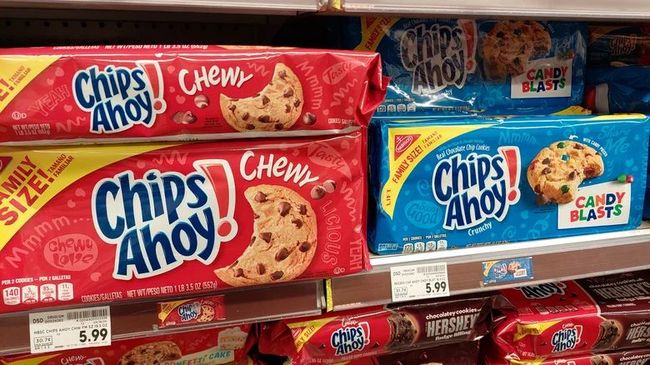
Walter Cicchetti/Shutterstock
Let's be honest: nobody rips into a packet of cookies expecting a healthy snack. What may take you by surprise, however, is just what goes into your go-to sweet treat. While the cookies you whip up at home are primarily eggs, sugar, flour, and butter, the ingredients list for a store-bought cookie is typically much more complex. The back of each cookie packet can be a revelation to read, with the expected sugar and flour often sandwiched between a handful of chemicals that sound more like a chemistry lab inventory than a cookie recipe.
Fortunately, this isn't the case for all cookies. Some brands boast shorter, more concise, and higher quality ingredient lists than others. To save you the trouble of individually examining each packet on your trip to the grocery store, we've identified some of the worst offenders for using low quality ingredients in their cookies. From high fructose corn syrup to artificial colors, we broke down the contents of multiple major cookie brands to find those severely lacking on the nutritional front. Sure, these cookies are tasty, but there are definitely brands out there that match their sweetness with fewer processed ingredients or concerning chemicals. If quality is your priority, you may want to give these 11 brands a miss next time the sugar cravings hit.
1. Oreo
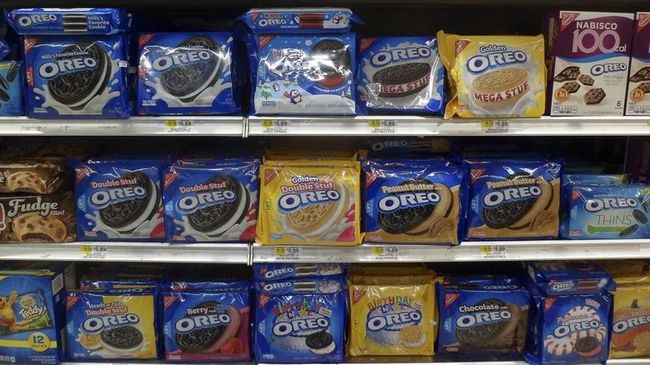
Richard Levine/Getty Images
In 1912, Oreo bookended sweet cream fondant with two individual cookies to create one of the most dunkable snacks around. Over a century later, the OG flavor is the best-selling cookie in the world,. You can find Oreo flavors as wild and varied as Dirt Cake, Sour Patch Kids, Wasabi, and Cherry Cola — the majority of which are packed with high fructose corn syrup, a kind of artificial sugar that's long been criticized for its ability to spike blood sugar and increase the risk of liver disease, insulin resistance, and inflammation.
Aside from high fructose corn syrup, some flavors of Oreo also contain controversial artificial colors such as Yellow 5 Lake and Red 40 Lake. Both of these have been found to be contaminated with benzidene, a known carcinogen, although more research is needed to establish just how much of a risk this poses when you eat it in small quantities. Meanwhile, Yellow 5 Lake (which is also known as tartrazine) was also linked to increased hyperactivity in a 2007 study published in The Lancet – one which ultimately led to a warning label being required on any food products containing the color in the European Union. Who doesn't love a snack with a safety disclaimer? Again, the presence of these colors varies from flavor to flavor (they're not included in the classic Oreos), so we recommend checking before giving a new flavor a whirl.
2. Chips Ahoy
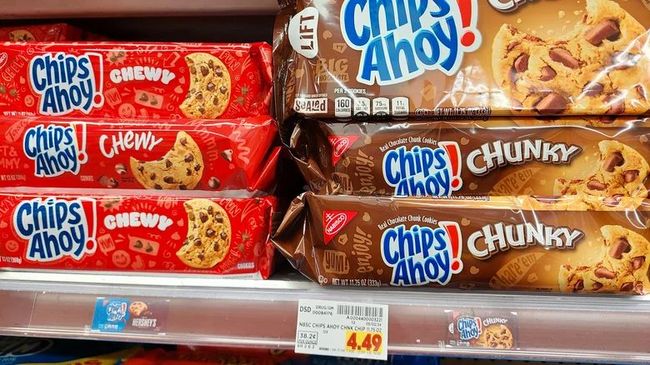
Walter Cicchetti/Shutterstock
From the Original Chocolate Chip to more adventurous flavors like Red Velvet and Reese's Peanut Butter Cups, Chips Ahoy is one of the biggest brands in the cookie biz. Taste-wise, they're everything you want from a cookie. The ingredients? Not so much. High fructose corn syrup plays a big part in the sweetness of Chips Ahoy cookies (despite the fact sugar is also present on the ingredients list), as do artificial flavors and additives such as dextrose and soy lecithin.
To give credit where it's due, Chips Ahoy Original Chocolate Chip Cookies don't contain quite as many additives or preservatives as some of their rivals. Less impressive are other varieties of Chips Ahoy, such as the Chewy Red Velvet Cookies. These also contain the artificial color Red 40 Lake (which, like Yellow 5 Lake, requires a warning on food labels in the European Union), plus a whopping four different kinds of oil: palm and palm kernel oil, coconut oil, and soybean oil. We don't know about you, but that's not a combo we've ever came across in a homemade cookie recipe.
3. Keebler
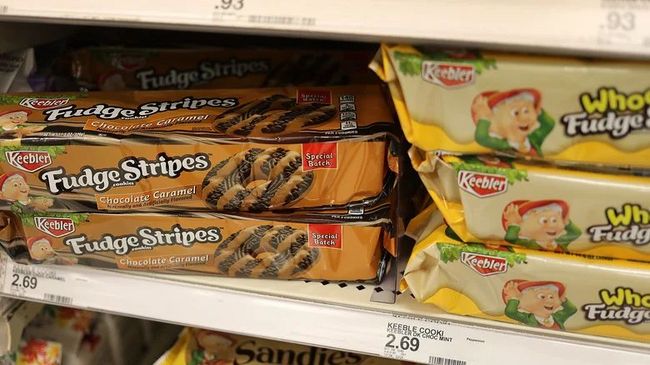
Joe Raedle/Getty Images
Keebler has kept sweet tooths satisfied since 1853 when Godfrey Keebler opened his Philadelphia bakery. Today, the brand's iconic cookie lineup spans from its iconic Fudge Stripes and Fudge Grahams, to its Chips Deluxe range — all of which use ingredients that we're fairly confident that Godfrey Keebler wasn't stocking in the 1800s. Artificial preservatives play an important role in every flavor, most of which sound more like scientific jargon than anything else. Think along the lines of sorbitan tristearate, dextrose, and degerminated yellow corn flour, as well as Yellow 5 and Yellow 6 if you pick a flavor such as the Fudge Sticks. Yummy.
For the most part, you can at least forget about high fructose corn syrup, with only a few flavors — such as the Whoopsy Fudge Stripes — utilizing this liquid sweetener. However, even that isn't enough to redeem the fact that these cookies are bulked out by a bunch of other low quality ingredients. That includes sodium acid pyrophosphate, used in the leavening of several flavors, which studies have found has a more adverse effect on the body than natural phosphates. While there's no such thing as a healthy cookie, there are still much higher quality choices than Keebler.
4. Lorna Doone
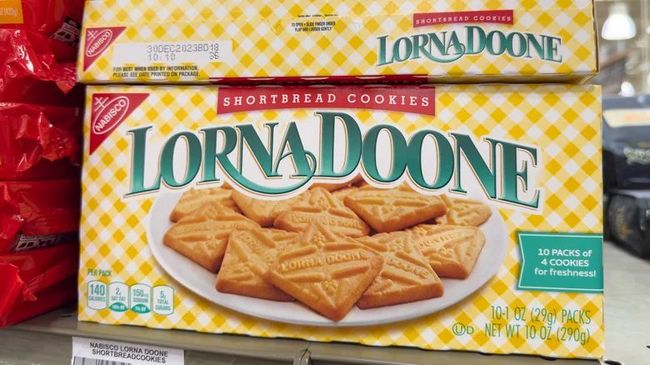
ZikG/Shutterstock
In theory, shortbread cookies are buttery, crumbly cookies. Lorna Doone may taste the part, but there's nothing genuinely "buttery" about them. Instead, Lorna Doone Shortbread Cookies can thank a mix of three different oils (soybean oil, canola oil, and palm oil).
The ingredients list for these cookies isn't quite as long or as preservatives-packed as some of the other brands on this list. That's a point in Lorna Doone's favor, sure, but you can automatically subtract that point thanks to the presence of high fructose corn syrup instead of actual sugar. Padding out the ingredients list are artificial flavor and soy lecithin, the latter of which is an additive that may actually have positive health benefits — such as lowering high cholesterol — but is still unfavorable to some due to the fact it's made from genetically modified soy with the lecithin extracted by chemical solvents such as hexane.
5. Grandma's
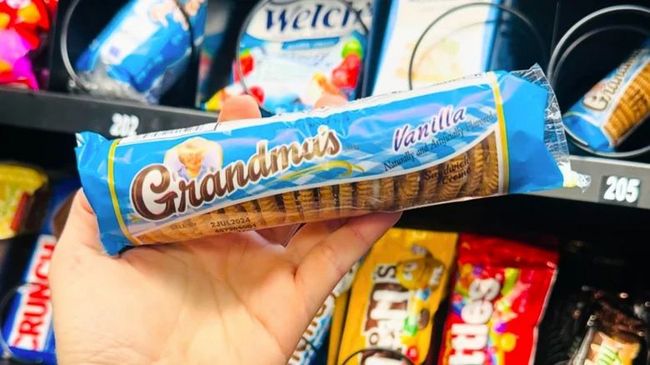
VendingBlast/Instagram
Grandma's cookies may feature the kindly, bespectacled face of a cartoon grandma, but we can't imagine our own grandparents whipping up cookies containing these kinds of ingredients. Even the brand's most straightforward chocolate chip cookies are packed with highly processed ingredients, such as soy lecithin, high fructose corn syrup, ammonium bicarbonate, and polydextrose. We challenge you to find any of those in your grandma's kitchen.
We could single out multiple additives in Grandma's cookies, but one of the biggest standouts is the antioxidant TBHQ (tertiary butylhydroquinone). While we're not quite sure how to pronounce that, we do know that its reputation has had its fair share of ups and downs. As per the Center for Science in the Public Interest (CSPI), a government study once found that TBHQ increased the risk of tumors in rats, while others believe that it has a negative impact on behavior and ADHD symptoms. It's approved by the FDA, but still strictly controlled; TBHQ can't make up more than 0.02% of the oil or fat in a food (via the FDA), as nobody's quite sure of its safe upper limit just yet. With all the questions and doubts around ingredients in Grandma's cookies, you may be better off asking around for your actual grandma's cookie recipe.
6. Great Value
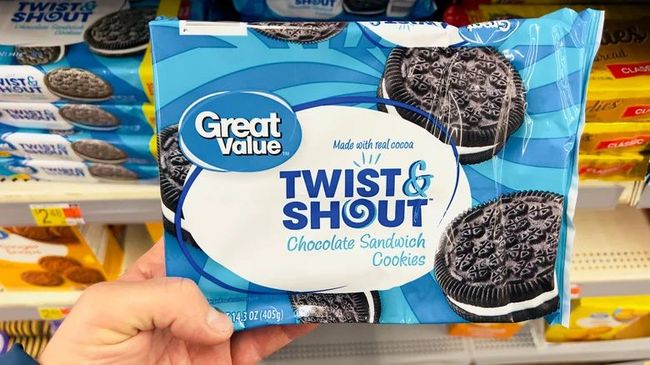
ZikG/Shutterstock
Walmart's Great Value range is a strong choice for affordability, but not so much for high-quality ingredients. A harsh reality in the food industry is that low-quality ingredients cost less, which is probably what allows the brand to sell nearly 50 cookies for less than $2.50. A quick look at the back of a Peanut Butter Sandwich Cookies or Fudge Striped Shortbread Cookies packet will tell you everything you need to know, with ingredients such as invert syrup (a sweetener known to spike blood sugar levels) and, of course, our old enemy high fructose corn syrup.
If you pick up the likes of the Great Value Iced Oatmeal Cookies, you'll also find titanium dioxide lingering in the ingredients list. Banned as a food additive by the European Union in 2022, it's usually used to boost the white color in food products (not to mention toothpaste and plastic) but has been classed as a Group 2B carcinogen — which means it may be carcinogenic but lacks enough research for anyone to say for sure — by the International Agency for Research on Cancer (IARC). While not all of the cookies contain titanium dioxide, they are all primarily a blend of other artificial undesirables such as highly-processed vegetable oil shortening and cocoa processed with alkali. Unsurprisingly, one variety of cookies (the Great Value Fudge Marshmallow Cookies, to be specific) even made it onto our list of the unhealthiest Great Value foods.
7. Smart Way
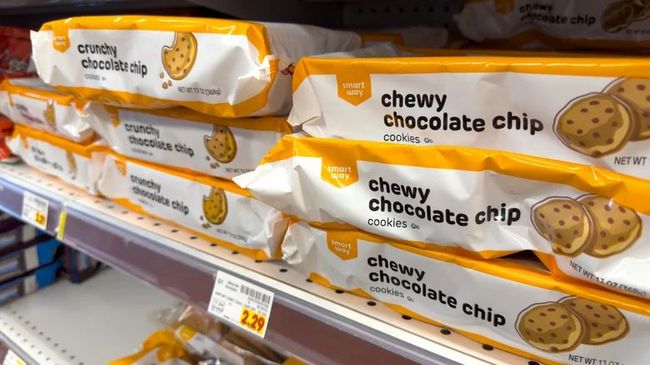
The Image Party/Shutterstock
Just like Great Value, Kroger's Smart Way product line offers pantry staples at low prices. Squeezing prices this low once again means ditching the quality ingredients for cheaper alternatives. Whether you're grabbing Vanilla Sandwich Cookies or Chewy Chocolate Chip Cookies, you can guarantee that high fructose corn syrup and a bunch of artificial flavorings will feature pretty prominently in the recipe.
Any cocoa used in Smart Way cookies has also been processed with alkali to help reduce its bitterness. This isn't necessarily the worst thing in the world, but the process does strip the cocoa of some of its natural health benefits, such as the flavanol antioxidants that are good for cardiovascular health. Other red flags for low-quality cookies include caramel color, dextrose, soybean oil, and odd colors like Yellow 5 or Yellow 6 in options such as the Vanilla Sugar Wafers. All in all, there's not much to celebrate here. Yes, you may be able to get 24 chocolate chip cookies for $1.59 (and these cookies may taste surprisingly delicious), but your body will thank you for satisfying your sweet tooth with other, more wholesomely powered cookies.
8. Nilla Wafers
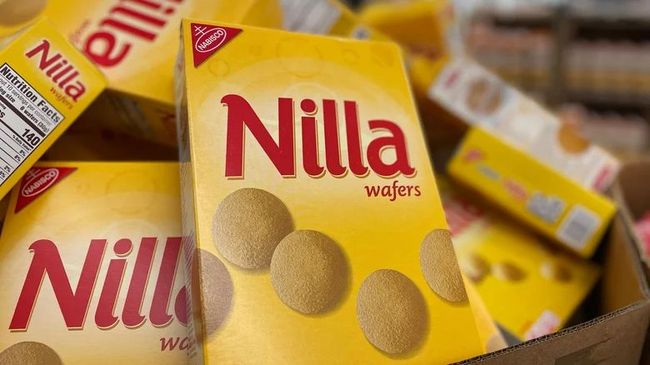
Billy F Blume Jr/Shutterstock
It doesn't matter if you're using them in a Southern banana pudding or eating them straight from the box (no judgment here, we've all done it), Nilla Wafers are delicious. Its name is an abbreviation for "vanilla," which used to be a key ingredient in the original Nilla Wafers. Today, however, you won't find many high-quality ingredients in these cookies — least of all actual vanilla.
That's right — instead of using vanilla extract, these cookies rely on good ol' fashioned natural and artificial flavors. While they once used real vanilla extract, Nilla Wafers reportedly switched to vanillin — a synthetic alternative to vanilla made from the likes of pine bark, clove oil, rice bran, and lignin — in the 1990s. Today, they do contain actual sugar and eggs (something we've quickly realized is a rarity in the world of packaged cookies, so that's a positive we suppose), but the rest of the ingredients list is stuffed with additives such as soy lecithin, mono- and diglycerides, and calcium phosphate, earning them a firm spot on this list.
9. Nutter Butter
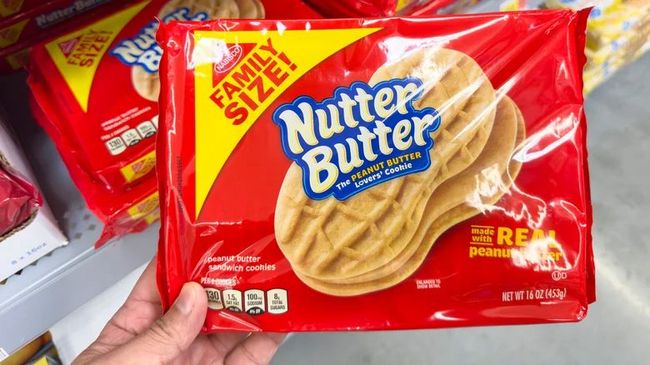
The Image Party/Shutterstock
Fun fact: nobody really knows who came up with the concept of Nutter Butters. However, every peanut butter junkie knows that quality peanut butter only really needs two things: peanuts and a little bit of salt. When you check out what goes into the peanut butter filling of Nutter Butters, you'll find both ingredients squeezed alongside corn syrup solids (which is essentially just a dried version of corn syrup), hydrogenated vegetable oil, and peanut oil. That alone should tell you everything you need to know about the quality of these cookies, with hydrogenated vegetable oil typically a telltale sign that a peanut butter isn't worth your time.
We were disappointed, but not really surprised, to find that the non-peanut element of a Nutter Butter is equally ridden with low quality ingredients. Sugar is paired with high fructose corn syrup to boost that salty-sweet ratio, while other additives — including soy lecithin, calcium phosphate, and artificial flavor — also make an appearance. Remember this the next time you try to convince yourself that Nutter Butters may boast health benefits due to their use of actual peanuts.
10. Mother's Cookies
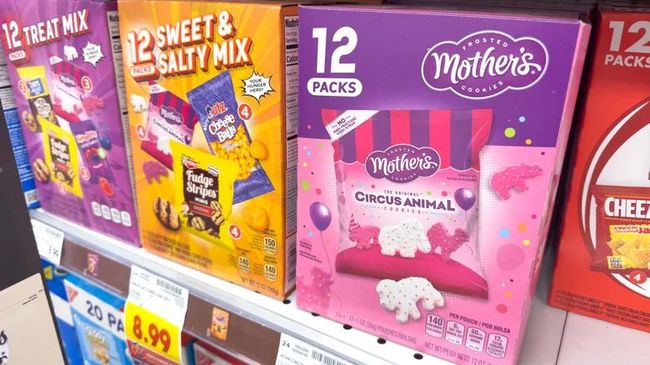
The Image Party/Shutterstock
Considering the fact that they're frosted, pink, and covered in sprinkles, it shouldn't come as too much of a shock that Mother's Cookies aren't packed with the healthiest ingredients in the world. Fun though its Circus Animal and Mythical Creatures Cookies may be, they're loaded with added sugars and processed ingredients, such as hydrogenated palm kernel oil.
What's most alarming is the fact that the majority of its ingredients list consists of artificial colors, which don't even add anything to the overall taste. The Circus Animal variety is, quite literally, a circus of colors, with Red 40 Lake, Yellow 5, Blue 2 Lake, Yellow 6 Lake, Blue 1, Yellow 6, and Red 3 — the latter of which will actually be banned in California as of 2027 — all making the cut. Research is always ongoing into the side effects of these colors, but some of the studies that have been carried out have concerning results.
For example, while scientists are split on whether Blue 2 Lake is carcinogenic, the CSPI previously concluded that it "cannot be considered safe given the statistically significant incidence of tumors, particularly brain gliomas, in male rats" and warned that "it should not be used in foods." Obviously, we're not rats, but if it's quality you're after, the point still stands that Mother's Cookies isn't exactly using the most wholesome ingredients on the market.
11. Stauffer's
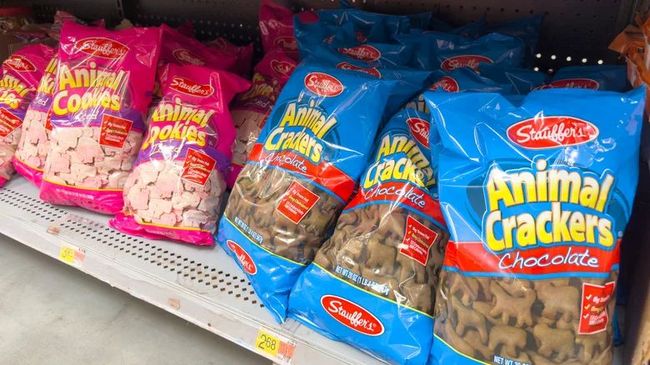
The Image Party/Shutterstock
It turns out that cookies shaped like animals don't have the best luck when it comes to quality ingredients. Stauffer's Animal Crackers and Animal Cookies contain actual sugar, but are both still deeply reliant on sweeteners like high fructose corn syrup and corn syrup, with the rest of their tastiness coming courtesy of natural and artificial flavors as well as other common additives such as soy lecithin.
As for their colorful appearance, you can thank (you guessed it) artificial colors. Red 40, Blue 1, Yellow 6, and caramel color crop up across the two different kinds of cookies, as does titanium dioxide for the white in Stauffer's Iced Animal Cookies. These cookies also have carrageenan. Derived from red alga and typically used as a thickener, some studies have linked carrageenan to increased inflammation and digestive problems. The jury's still out on that one, considering the fact that these studies have only been carried out on cells and animals (via Medical News Today). Regardless, the ingredients lists for Stauffer's cookies are still pretty controversial. While we give them bonus points for fun (after all, who doesn't love a snack shaped like an elephant?), we still have to lump it in among the worst quality cookie brands.
The President Who Inspired The First She-Crab Soup Recipe
The NYC Restaurant That Only Employs Grandmas As Chefs
The Unhealthiest Type Of Canned Fruit Is Also The Sweetest
The Cooking Method To Use For Perfect Pork Tenderloins And Chops
The Brazilian Dish You Should Use To Repurpose Leftover Grilled Chicken
The Alabama Restaurant Where It Feels Like Thanksgiving Every Day
About Us Terms of Service Privacy Policy Contact Us
Hotline(+86)17301604571
 Enterprise WeChat
Enterprise WeChat
for Client Service
 EZBuy
EZBuy
WeChat APP
Sinoexpo Digital Platform
Shanghai Sinoexpo Informa Markets International Exhibition Co., Ltd. All rights reserved
沪ICP备05034851号-77
 沪公网安备31010402000543号
沪公网安备31010402000543号